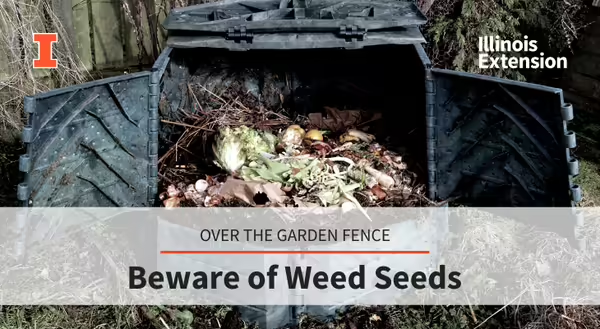
We have had some good weather to begin our fall cleanup efforts in the home landscape, and other days, it has been too cold and rainy to get out in the yard as we would have wanted. Those days have allowed us to see what else will need to be done before the “snow flies.” Master Gardeners continue to field calls remotely and a common one has been the abundance of weeds found as yard cleanup is progressing.
Most of those weeds got a start back several weeks ago while we were focusing on other parts of our lives – school in whatever form that takes for the kids, changing work schedules, etc.
Weed seed just needs a little encouragement and some open space, as our perennials, vegetables and annual flowers began to slow down or even head to compost heaven. Some weeds did not even need the space, but rather grew up from underneath the canopies of our plants.
Gardeners are finding dandelions and thistles among the annual grasses. More recently the winter annuals have begun to sprout. The most common one is chickweed. Chickweed really likes cool moist soils and will even continue to grow underneath snow cover in protected locations.
The challenge is to remove those weeds during our cleanup efforts and not create a seed bank for future years. Weeds that are biannual will have only grown the rosette of foliage for this year and pose no threat if dug up and put into the compost bins. Perennials like the dandelion can still be flowering and setting seed. If you are digging those up, do not include any flowers or seeds if you are composting them. It only takes a few days for those yellow blooms to have viable seed, even laying in the compost pile. Since most gardeners do what is called “cold composting” the weed seeds are not destroyed. Later on, we just spread those seeds around the yard as we benefit from the compost.
Annual grasses with seed heads pose another risk of being spread around. The plants themselves are fine for compost, just cut off and dispose of seed head elsewhere. Foxtails are the most commonly found grass in your garden beds. It seems to like growing up through the center of iris and daylilies where it remains camouflaged among the flowers and foliage until we begin to see the seed heads. Other seed heads may be helpful to winter wildlife and could be left, such as black-eyed Susans, sedums, Joe pye weed, or zinnias.
Given our weather pattern, let’s hope the garden cleanup will not take us into November too far. Work around the weather as best you can. That may mean clean up does not start early, but rather after the dew is gone and the temperatures rise a bit. Dress accordingly, have several pairs of gloves ready so hands do not get wet and cold, and use something on the ground to cushion your knees and keep them dry too.
Find more about fall garden cleanup from Illinois Extension.
About the author: Richard Hentschel’s expertise extends across several subject areas with specialties in lawn care, fruit tree production, woody ornamentals, and home and community gardening. During his 45-year career in horticulture and agriculture, Hentschel became a well-known and respected expert for commercial and homeowner audiences, industry organizations, and media. He retired from University of Illinois Extension in April 2022 with nearly 30 years of service as a Horticulture Specialist and Educator in northern Illinois.